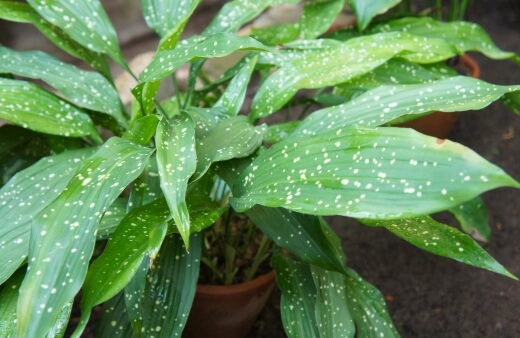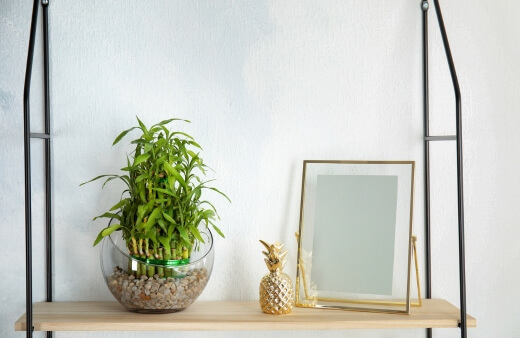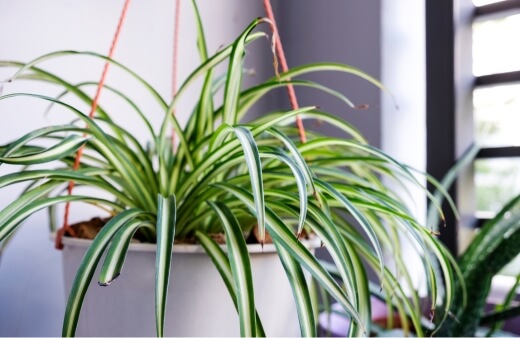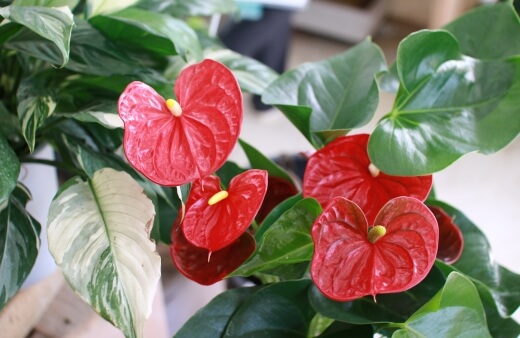Placing plants indoors is a great way to enhance the beauty of your home or office but when you decide to put plants, there are certain things that you must ensure because every plant you choose might not be appropriate to be placed indoors.
Sunlight is an essential thing plants need for their survival but some green buddies in the plant family can be placed indoors to make your place look extraordinary. So if you don't have a lot of sunny windowsills, there are a lot of low light indoor plants you may choose from.
More...

Best Low Light Indoor Plants in Australia
Even without direct sunlight, low light indoor plants will probably thrive in an east or west-facing room with a few windows. So what possibilities are there for you to utilize?
To simplify your task, you should look at the following low light indoor plants and improve your house setting.
1. Cast Iron Plant (Aspidistra elatior)

The cast iron plant, commonly referred to as the bar room plant, is ideal for rookie plant parents because of its practically indestructible characteristics.
It is able to endure neglect and flourish in the shadows. Even better, it can purify the air while also adding a little dampness to ease dryness. The cast iron plant is tough, but it does have certain vulnerabilities.
For example, avoid direct sunlight because it can burn and bleach the leaves, which makes it a great choice to be placed indoors. It has bigger leaves that look beautiful indoors.
2. Devil's Ivy (Epipremnum aureum)

The name "pothos" refers to this plant's ability to develop vines in adverse situations. This can be detrimental if it is placed outside, where it could stifle the growth of other plants, but it is ideal for indoor gardening.
Devil's Ivy does best at temperatures between 16 to 27°C. However, devil's ivy is also really simple to grow; all you have to do is take a vine with an attached root and submerge it in water until roots appear.
Doing this allows you to divide a single plant into other ones to decorate your home or give as gifts.
3. Lucky Bamboo (Dracaena sanderiana)

Lucky bamboo plants can be grown in soil or water and are great for offices and residences. They frequently feature tiny green leaves dotted along sculptural or braided stalks. Lucky bamboo plants are a crucial component of feng shui practice and are believed to bring luck and fortune, especially if they were given to you as a present.
They have a well-deserved reputation for being almost invincible, which also helps. Although lucky bamboo prefers some light, it may survive in environments with almost complete shadows. On the other hand, they do have poisonous qualities.
Such plants seem challenging to grow indoors, but your equipment for easy gardening chores will be handy to complete your tasks.
4. Spider Plant (Chlorophytum comosum)

One of the most adaptive and simple-to-grow low light indoor plants is the spider plant. Its star-shaped blossoms develop into spider-like green offshoots, which dangle down from the parent plant's long, slender green leaves like spiders on a web, giving rise to the plant's common name.
In pots or baskets, spider plants can be cultivated as trailing or hanging plants. Even in less-than-ideal lighting settings, such as artificial light, they can persist for a very long time. Therefore, water the soil frequently to keep it from drying out.
5. Snake Plant (Dracaena trifasciata)

You can grow the snake plant among the greatest low light indoor plants because it requires little effort. They have broad, sword-like green leaves that can reach a height of eight feet, giving them a stunning appearance.
Snake plants are remarkably resilient and can survive for many years. It can endure quite shady situations but prefers to thrive in partial shade. However, be careful not to overwater it, particularly if it is not exposed to sunlight, which dries out the soil.
Overwatering can destroy a plant by causing root rot. Also, be aware that pets should not be around snake plants.
6. Maidenhair Fern Plant (Adiantum)

The maidenhair fern's delicate, fan-shaped leaves are grouped on dark stems. Maidenhair fern is a well-liked low light indoor plant that gives a room a splash of green.
But, for these ferns to flourish, the soil must be continually damp but not soggy. Also, they prefer a warm, humid habitat that is away from direct sunshine.
7. Flamingo Flower Plant (Anthurium)

A genus of tropical plants with vivid flowers and lush foliage is named Anthurium, often known as the flamingo flower. High humidity and persistently damp but not soggy soil are ideal conditions for these plants to grow inside.
The ideal site will have plenty of indirect, bright light. However, the leaves may burn in the direct sun due to their hazardous nature. On the other hand, beautiful and colorful flowers make it one of the most wanted indoor plants.
8. Swiss Cheese Plant (Monstera deliciosa)

The split-leaf philodendron, often known as the Swiss cheese plant, has broad, leathery, green leaves with noticeable perforations. These plants typically thrive indoors in bright, indirect light and grow naturally in shaded environments. However, the leaves might be burned by too much light.
It would be best if you use small plant pots for these plants as they have bigger leaves that can cover more space, so they should be placed in some corners.
9. Bonsai Plants

Bonsai plant can be one of the finest choices that you can make for an indoor plant. Small leaves and stems make it attractive, but the most unusual thing about this is that it looks like a complete tree in a small plant pot, and that makes it significant.
So when you decide to place indoor plants, you shouldn't miss out on the bonsai plant as it is one of a kind.
For more collections of different types of plants, refer to our list below:
Wrapping Up Our List of Low Light Indoor Plants
Adding indoor plants is a great initiative as it breathes life into your home's settings. People try to do a lot of unique stuff while decorating their indoors, but there is nothing better than placing indoor plants.
Besides adding beauty, indoor plants became popular as they are low on maintenance. They need less water and less sunlight. Moreover, the life of low light indoor plants is much longer than you can expect them to last.
Published on April 8, 2023 by Maisie Blevins
Last Updated on January 28, 2024




